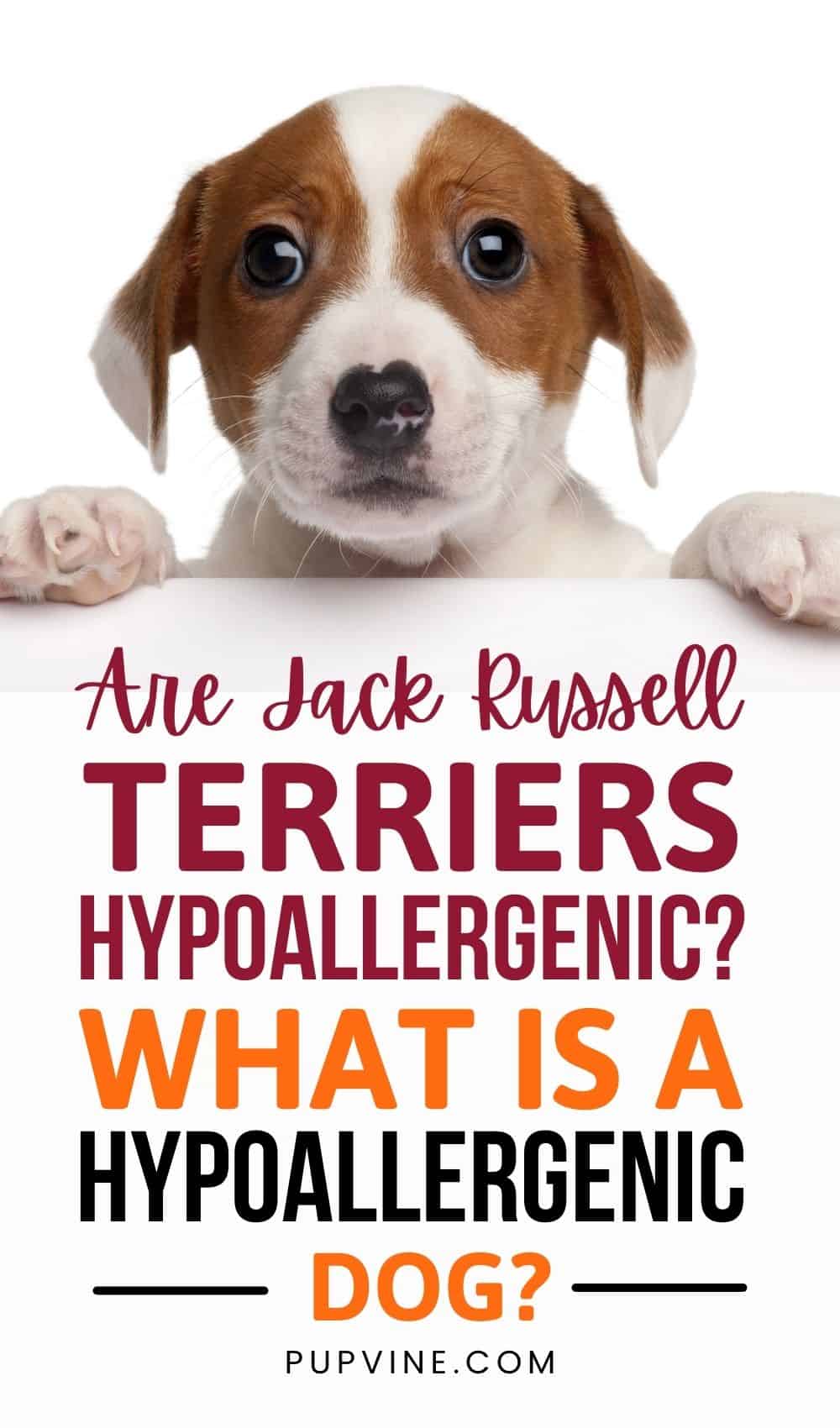The Jack Russell Terrier (also known as JRT) was developed in southern England during the mid-1800s by Parson John Russell, from whom the breed took its name.
Russell aimed to create a working terrier that would hunt with hounds, bolting foxes from their dens so that the hounds could chase them.
The Jack Russell became a favorite of many sportsmen, especially those who hunted on horseback. The dog breed was known in the United States by the 1930s.
The Jack Russell Terrier Club of America (formed in 1976) maintains an independent registry. It considers the Jack purely a hunting dog, but the Jack Russell Terrier Association of America (JRTCA) sought recognition by the American Kennel Club, which was granted in 2000.
To differentiate it from the dogs registered by the JRTCA, the AKC renamed the breed, calling it the Parson Russell Terrier.
The Jack Russell Terrier is a small, high energy dog breed that is best known for its intelligence and enthusiasm. These small dogs tend to make great family pets due to their happy personality and cute appearance.
At first, this adorable and affectionate dog may seem like a good choice for new pet parents and apartment dwellers. But many dog owners may find themselves surprised at this little pup’s energy and intensity.
But, let’s get back to our topic. Are Jack Russell Terriers hypoallergenic? Before we give you the answer, let’s find out what the term hypoallergenic means exactly.
What Does Hypoallergenic Mean?

Hypoallergenic is a word that was first coined by the cosmetic industry in the 1950s. If you are an experienced buyer of cosmetic products, you probably know what the word hypoallergenic means – it refers to a beauty product that is less likely to cause an allergic reaction.
By definition, hypoallergenic doesn’t rule out the potential for an allergic reaction but just makes it more unlikely.
But because there’s no agreed-upon scientific or legal definition of the term, seeing the word “hypoallergenic” printed on a label doesn’t necessarily protect you.
Sellers of cosmetics, toys, clothing, and even pets can label their product “hypoallergenic” without being required to meet any government-prescribed standard.
Some people might not be affected at all by a particular ingredient, while others might feel slightly itchy or uncomfortable. And there are those who might experience a full-fledged allergic reaction.
If you think you or your child may have an allergy to food, a pet, or any substance, it’s best to talk to your doctor and consider seeing an allergist for testing and treatment. Then you’ll know what allergens to look out for.
What Causes Dog Allergies?
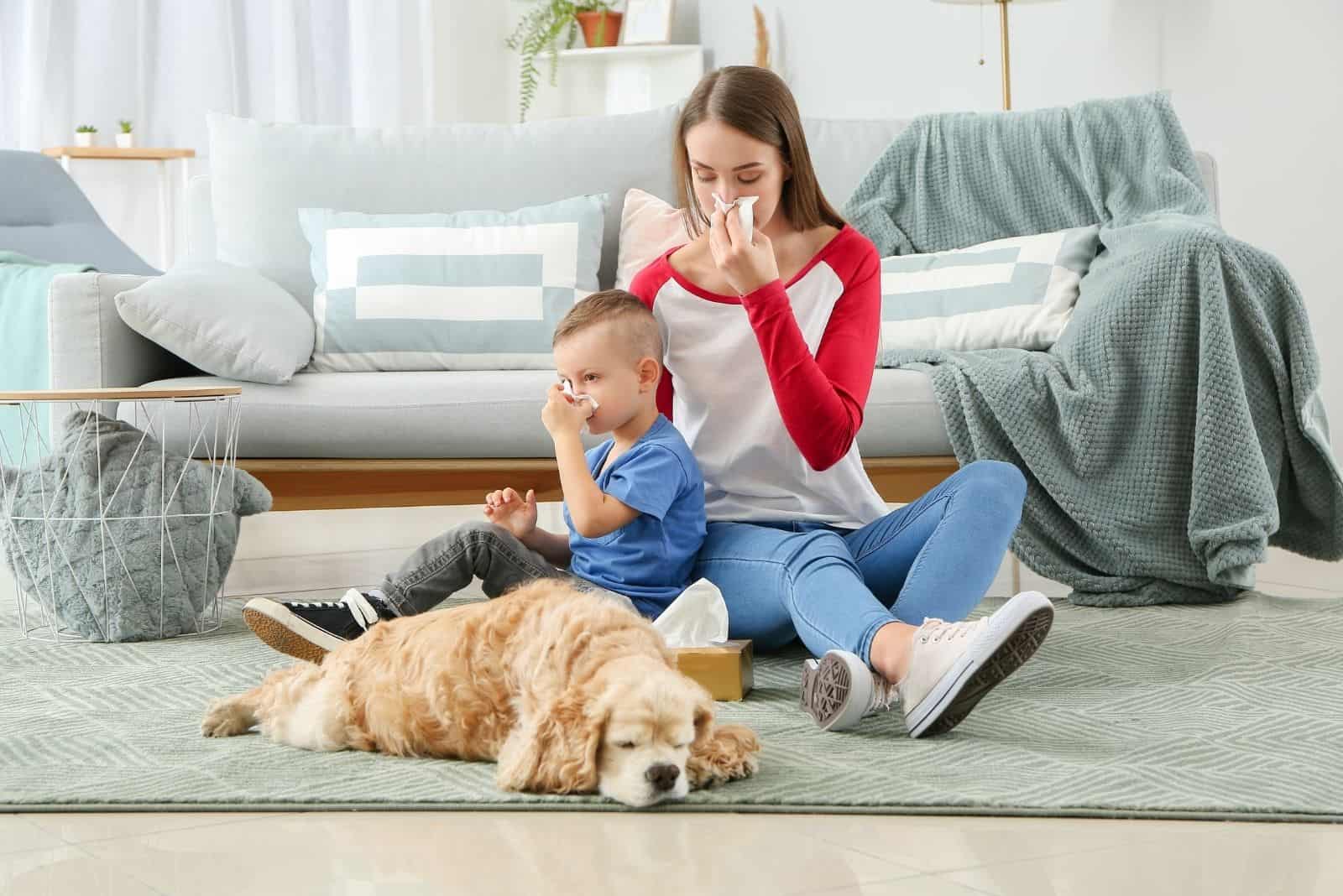
People are allergic to proteins found in the skin and saliva of every dog. You’ll often hear the word “dander” linked with dog allergies. Dander is a colloquial term for dead skin cells. Much like dandruff in humans, when skin cells die, they are shed.
Unlike dandruff, which is seen as small white flakes, dander is altogether too small to see with the naked eye.
As dogs age, they produce and shed increasing amounts of dander. Even a supposedly hypoallergenic dog will inevitably age and so produce more dander.
While dog hair itself doesn’t cause an allergic reaction, dander builds up on the hair follicles. It’s this build-up of dander on the hair that causes the reaction.
This has led people to look for short-haired breeds or low shedding breeds in the hope that they won’t have as strong an allergic reaction to these dogs and other health issues connected with allergies.
Unfortunately, a dog with short hair is just as likely to have those proteins as a dog with long hair, and any dog who has hair sheds. These proteins are not in the hair, to repeat one more time, but in the skin and saliva.
Any dog that goes outside is also just as likely, particularly at high-allergen periods of the year, to pick up or track in pollen or other allergens that can affect you. So if you want a dog despite allergies, be patient. There is a breed that is right for you!
Does A Hypoallergenic Dog Truly Exist?
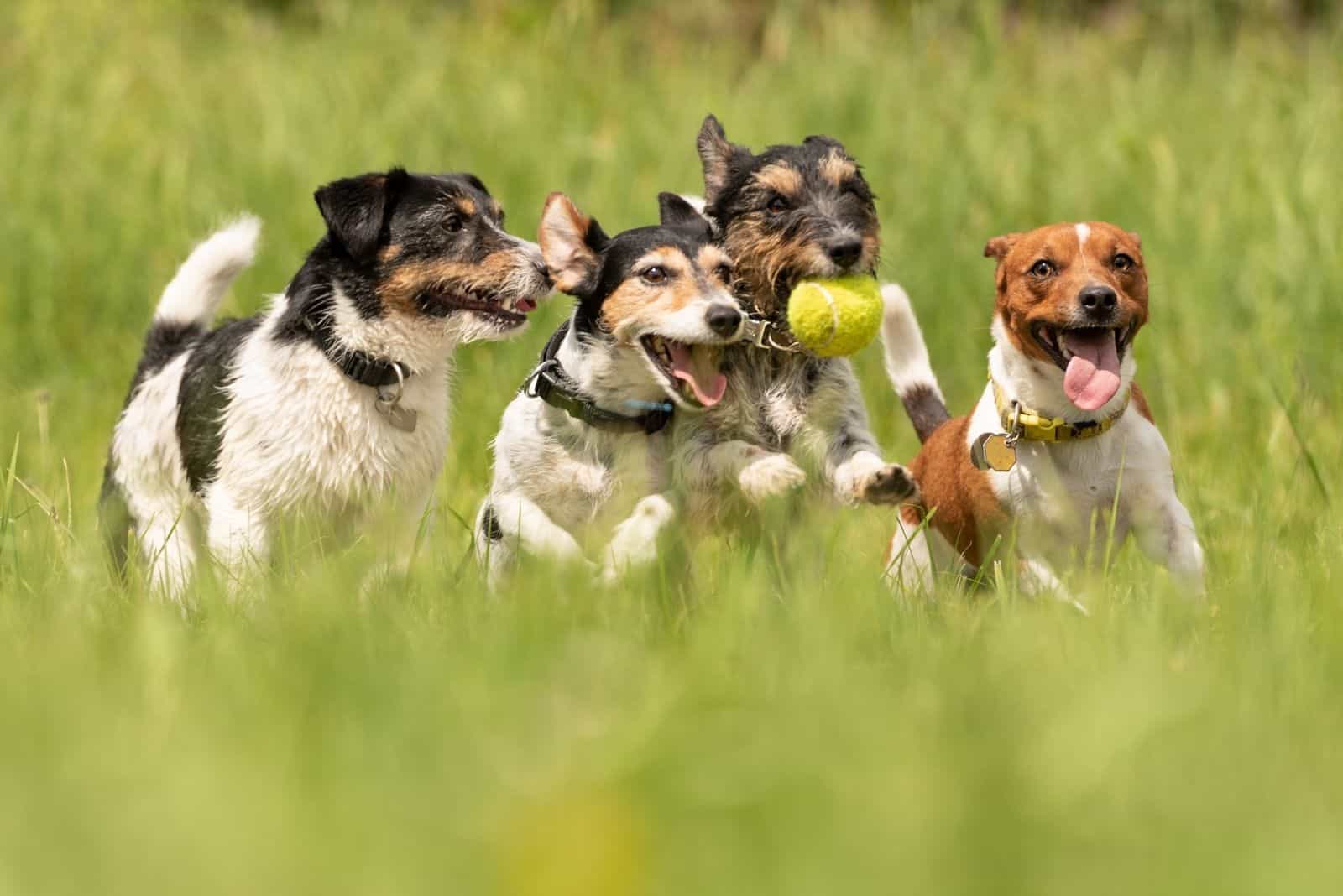
If you are researching dog breeds online, you will notice the term hypoallergenic dogs pop up a lot. There is a lot of discussion about them.
Hypoallergenic is a word used to categorize the type of dogs, usually with fur that doesn’t shed or sheds minimally and produces little to no dander.
The truth is that there is no hypoallergenic dog breed because all dogs have saliva and shed dead skin cells, known as dander. These are two of the most significant sources of allergens.
On their website, the AKC makes it clear that there is no such thing as a completely hypoallergenic dog.
Unless you live in a completely sterile environment, there is no way to completely avoid allergens. While no dog is 100% hypoallergenic, it’s possible to find fewer allergenic dog breeds that are better suited for allergy-sufferers.
These dogs have a predictable, non-shedding coat that produces less dander. Dander, which clings to pet hair, is what causes most pet allergies in people.
Even though dogs that are hypoallergenic don’t truly exist, many breeds make it possible to enjoy the companionship of a dog, even if you suffer from allergies.
Are Jack Russell Terriers Hypoallergenic?
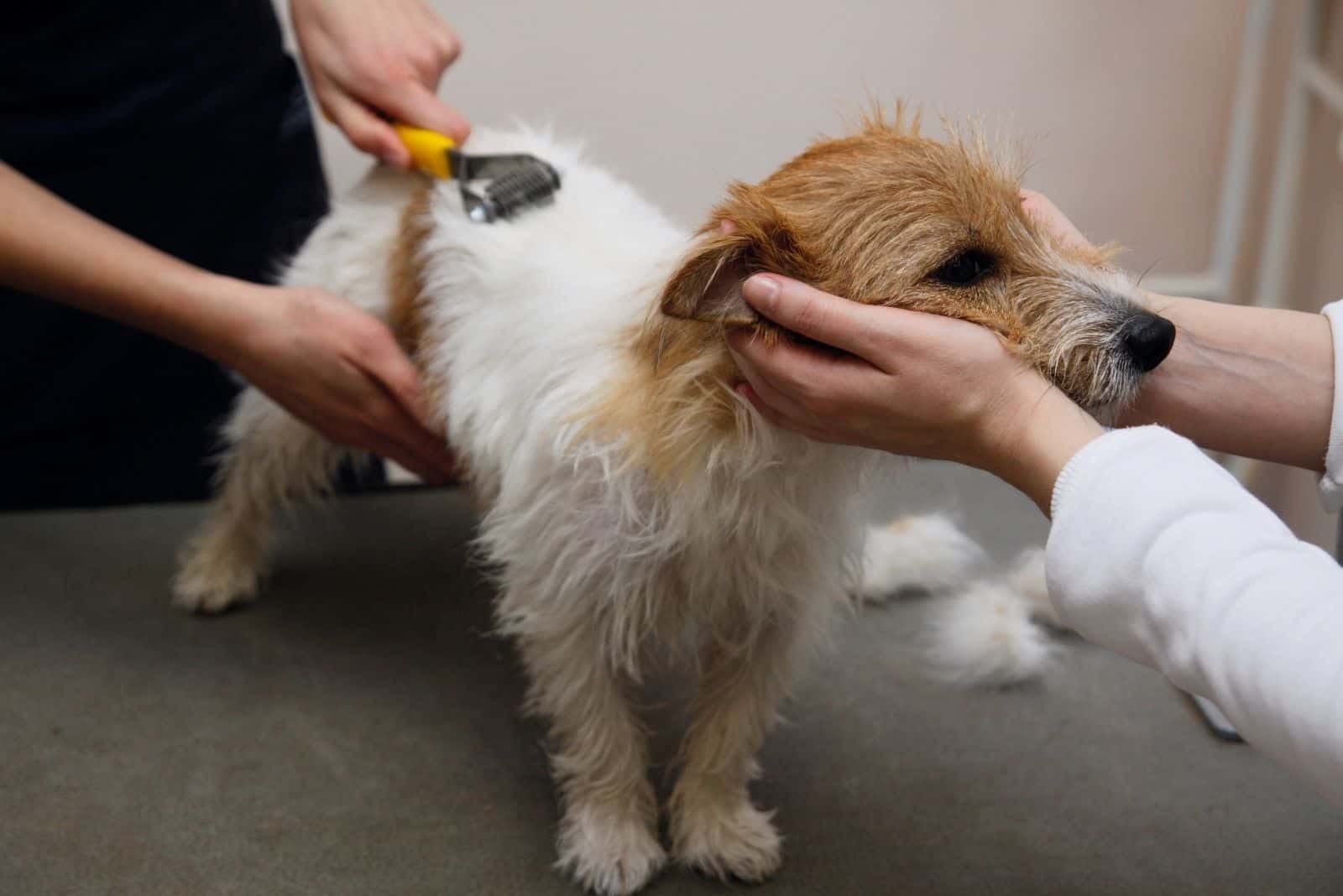
In the context of the question “Are Jack Russell Terriers hypoallergenic?” the answer is simple – no, Jack Russell’s are not considered hypoallergenic dogs and are moderate shedders.
These dogs can cause allergies for an individual who typically has allergic reactions and symptoms to dogs. Any dog can cause allergies to flare up depending on what the potential pet parent is allergic to.
The JRT is also known to produce a minimal to moderate amount of dander. For someone with severe allergies, a Jack Russell may not be the best dog breed to have.
How much a Jack Russell Terrier sheds may depend on the type of coat they have.
Grooming A Jack Russell Terrier
Jack Russell Terriers are easy to recognize. They are a distinctive breed, despite the variety in their coats. There are essentially three different coat types:
• A smooth coat is very short and lies in one direction.
• A rough coat, also called wire-haired, has a longer fur ranging from an inch or more in length. This fur will grow in all different directions giving a wiry look to the dog.
• A broken coat is a combination of a smooth and rough coat.
Both smooth and broken coats are considered to have a double coat, and each has a coarse texture. The broken coat tends to be slightly longer in nature, with some eyebrow and beard hair.
If you’ve been told that your JRT has a rough coat, this simply means it is slightly longer than the broken; however, to its standards, the coat should never be curly or wavy.
All Jack Russell Terriers need brushing regularly. Smooth coat Jack Russell Terriers only need to be brushed once a week.
Rough or broken coat Jack Russell Terriers will require more frequent brushing to remove dead hair trapped in their fur.
To groom all of these textured coats, you will need a good bristle brush and a once-a-week schedule. Remove all the dead and loose hair, and, if done faithfully and properly, your Jack will seldom need to be bathed.

Photo from @eddiethejrt
In addition to brushing, rough and broken coats should be hand stripped at least twice a year. Hand stripping removes dead hair that hasn’t been shed properly and requires a specific grooming tool.
This process is time-consuming. For the best results, have it done by a professional groomer.
Start brushing and examining your dogs when they are puppies to get them used to it. Handle their paws frequently — dogs are touchy about their feet — and look inside their mouths and ears.
Make grooming a positive experience filled with praise and rewards (use dog food as treats), and you will lay the groundwork for easy veterinary exams and other handling when they are adults.
Mixed Breeds
If you want another dog similar to the JRT, consider one called the Jack-A-Poo, a mix between a Jack Russell Terrier and a Poodle. The first Jack-A-Poo was thought to have been bred in the early 1990s when designer dogs were becoming more popular.
The idea behind the creation of these pups was to create a breed with a low shedding coat that would be more hypoallergenic than Jack Russell Terriers. However, there is no guarantee that a Jack-A-Poo won’t shed as much as a purebred Jack Russell Terrier.
It’s worth mentioning that Poodles are probably the most famous dog breed advertised as being hypoallergenic.
The same goes for any Poodle hybrid, including the Goldendoodle (a mix of Golden Retriever and Poodle), Cavapoo (a cross between the Cavalier King Charles Spaniel and Poodle dog breeds), Labradoodle (a cross between a Labrador Retriever with a Poodle), etc.
Can Someone With Dog Allergies Still Have A Dog?

The first step in determining if you can live with a dog is to undergo testing for allergic sensitization. Although what’s causing your allergies might seem obvious, don’t self-diagnose because your symptoms could be unrelated to what you suspect.
Many people with allergies are allergic to more than one thing. And those allergic triggers can add up. So, if you have an issue with pollen and a pet allergy, reducing exposure to pollen might be enough to keep your dog allergy symptoms at bay.
The real issue to consider is the severity of your allergies. If your symptoms are inconvenient but tolerable, then there is likely a place for a dog in your life.
Some dog breeds (like the American Hairless Terrier, Bedlington Terrier, Bichon Frise, Yorkshire Terrier, etc.) have hypoallergenic coats that produce much less dander, which is attached to the hair and causes most allergies in humans.
So we see that people who have an allergic reaction to dogs can still have a dog. However, having a dog certainly won’t relieve their symptoms.
There are many strategies to help control dog allergens in your home. This will enable you to enjoy having a dog, even if you find yourself allergic.
Here are some tips to minimize dog allergies in your home:
• Vacuum Regularly – One of the best defenses in controlling dander and loose dog hair is to vacuum frequently with a powerful vacuum cleaner designed to deal with pet hair.
If you don’t know how to choose a powerful vacuum cleaner with anti-allergen technology, ask for advice from professional sellers or check online which would be best for this purpose.
• Keep pets out of bedrooms – Keeping your dog out of your bedroom can help lessen the dander and allergens in that room. This strategy can help allergy sufferers sleep better at night.
• Use an air purifier – Air purifiers help remove allergens like dander and dust from the air. They also help remove airborne germs like viruses. This can help allergy sufferers breathe and sleep better with clearer sinuses.
• Keep furniture off-limits to your dog – If you hate vacuuming furniture, keeping your dog off couches and chairs can cut down on allergens and dog hair on clothes.
• Dust regularly – Keeping up with dusting can cut down on allergens in your home. To help even more, be sure to vacuum after dusting so you can vacuum up any dust stirred up that didn’t get trapped in your dusting cloth.
• Brush your dog regularly – While brushing won’t prevent shedding, it can help cut down on loose hair in your home. When possible, brush your dog outside.
• Wash your hands frequently – Make it a habit to wash your hands after touching your dog or their toys. While playing or interacting with your dog, try not to touch your face to help avoid accidentally rubbing allergens into your eyes.
• Minimize carpeting – It’s easier to keep dog hair off wood and tile floors than carpets. However, if you have carpets, steam clean them regularly. Also, wash throw rugs frequently in hot water.
• Wash your bedsheets weekly – Even if your dog isn’t allowed in the bedroom, allergens will still find their way into your room. Washing your bedsheets weekly can help.
• Talk to your doctor – There are various over-the-counter and prescription allergy medications that can help you manage your allergies. Consult your doctor about options that may be best for you.
Final Thoughts
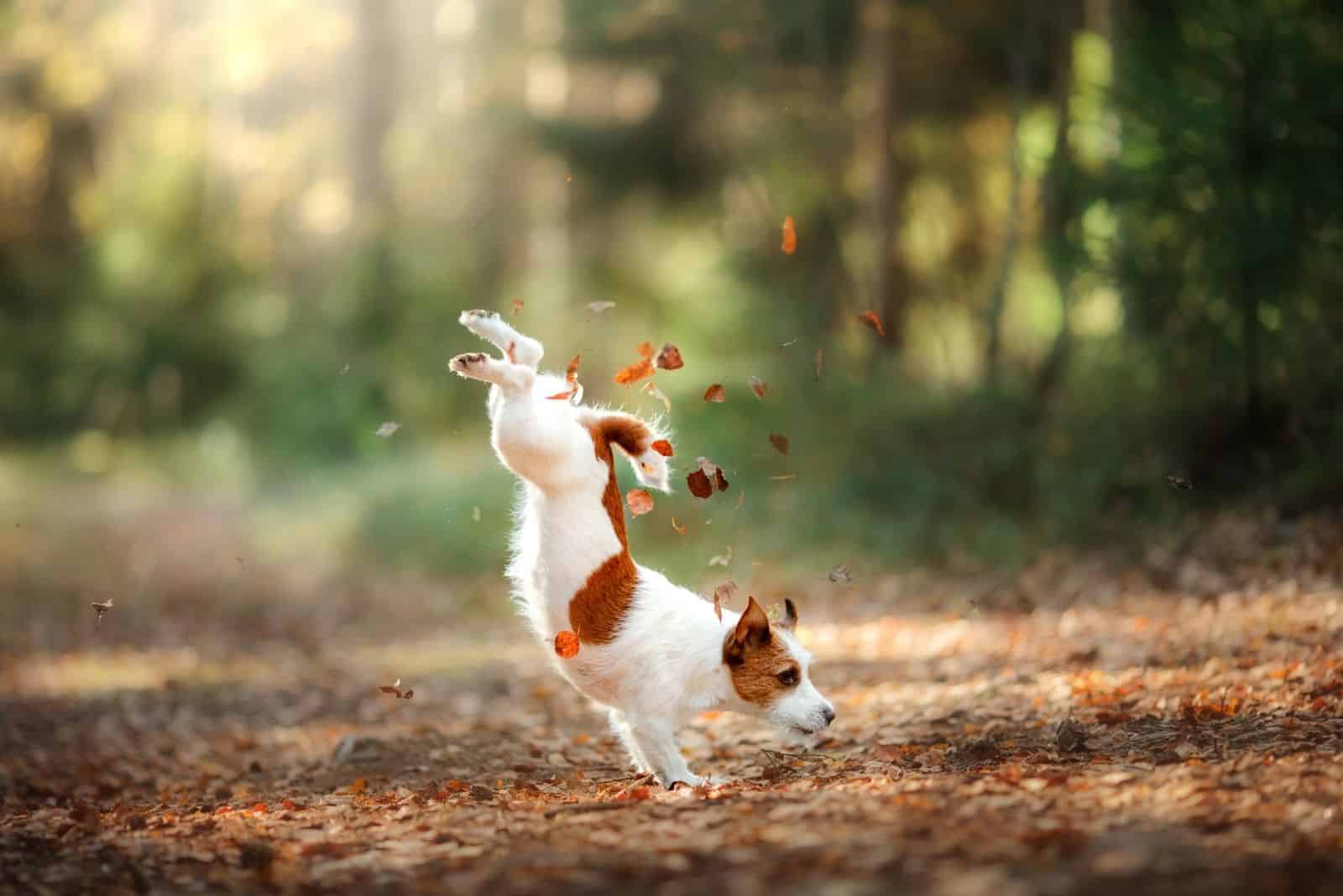
So, are Jack Russell Terriers hypoallergenic dogs? No, they are not.
If you have allergies to certain dogs, you may want to organize a ‘playdate’ with a Jack Russell Terrier to ensure his fur will not create any problems during his long lifespan (they have a lifespan of 15 years or more).
The best way to find out if you are allergic to a Jack Russell terrier or any other dog breed is to find out if any of your friends or family own this dog.
Ask if you can look after them or visit them for a few hours, see how you react towards the breed. Depending on the severity of your allergy, you will grasp if you are highly allergic, just slightly, or maybe not at all.
There are also ways to prepare your home to help keep allergies at bay when you have a dog. Be sure to wash your pet’s bed often, keep up with his grooming, and don’t let him sleep on your bed.
It’s also helpful to remove heavy carpets and drapes that can trap dander. A vacuum cleaner designed for pet hair also helps remove allergens, and some can even groom the hair and dander right from your dog.
If you’ve always wanted to own a dog but you cannot deal with tumbleweeds of dog hair around your home, or if allergies have always held you back, don’t worry.
There are other breeds that would suit you. Just research all possible breeds and find the perfect one.
Read Next: Long-Haired Jack Russell Terrier: Is There Such A Thing?
